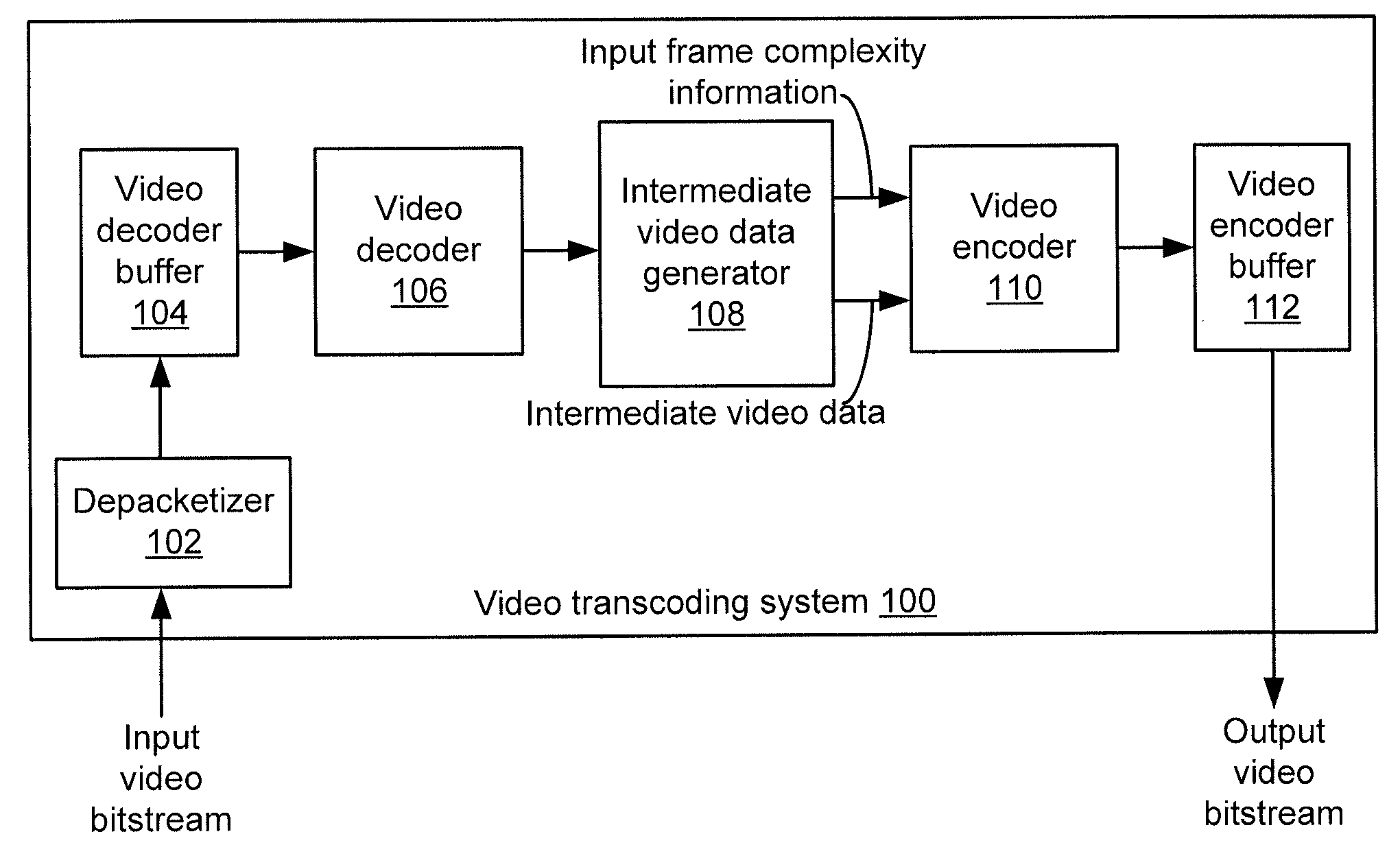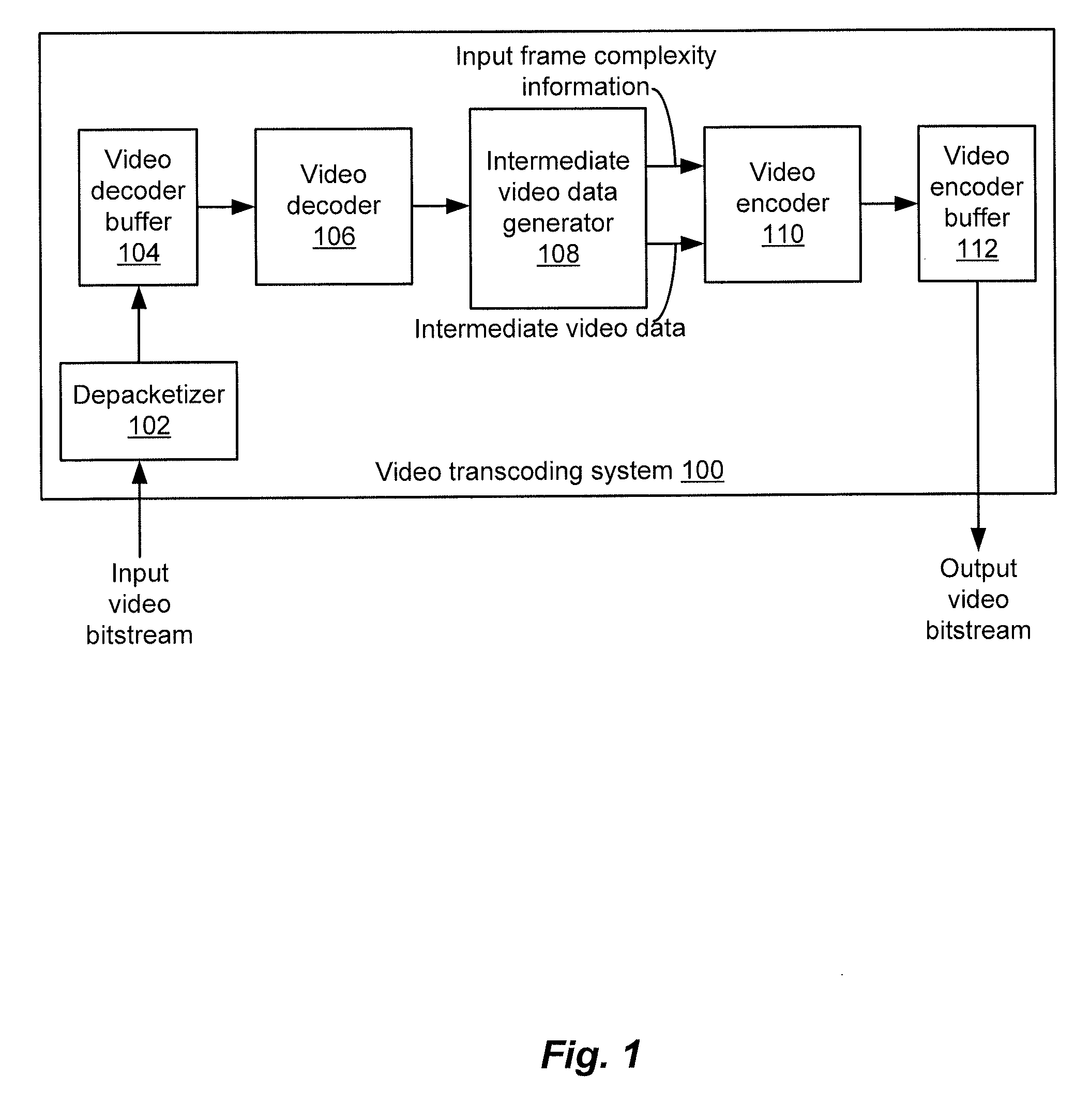Bitrate control algorithm for video transcoding systems
a bitrate control and video transcoding technology, applied in the field of video transcoding systems, can solve the problems of conventional rate control algorithms to make inefficient allocation of bits across the video stream, blocky or “blurry” video, and control algorithms in video transcoding systems can sometimes have a detrimental effect on video quality, so as to avoid overflow of the video encoder buffer, improve bitrate control accuracy, and characterize the input bitstream better
- Summary
- Abstract
- Description
- Claims
- Application Information
AI Technical Summary
Benefits of technology
Problems solved by technology
Method used
Image
Examples
Embodiment Construction
[0022]A video transcoding system and method is disclosed that employs an improved rate control algorithm. The presently disclosed video transcoding system employs a model based adaptive bitrate control algorithm that uses information derived from an input video bitstream provided to the video transcoding system for better characterizing the video sequence provided to the video encoder when performing the rate control function. Such improved characterization of the input video bitstream allows the video transcoding system to control the output bitrate with increased accuracy, thereby allowing a high quality video output to be produced in which “blocky” or “blurry” video is substantially eliminated from the output video bit stream, and synchronization of audio and video data is well maintained at the endpoint device.
[0023]FIG. 1 depicts an illustrative embodiment of a video transcoding system 100, in accordance with the present application. In the illustrated embodiment, the video tra...
PUM
 Login to View More
Login to View More Abstract
Description
Claims
Application Information
 Login to View More
Login to View More - R&D
- Intellectual Property
- Life Sciences
- Materials
- Tech Scout
- Unparalleled Data Quality
- Higher Quality Content
- 60% Fewer Hallucinations
Browse by: Latest US Patents, China's latest patents, Technical Efficacy Thesaurus, Application Domain, Technology Topic, Popular Technical Reports.
© 2025 PatSnap. All rights reserved.Legal|Privacy policy|Modern Slavery Act Transparency Statement|Sitemap|About US| Contact US: help@patsnap.com



